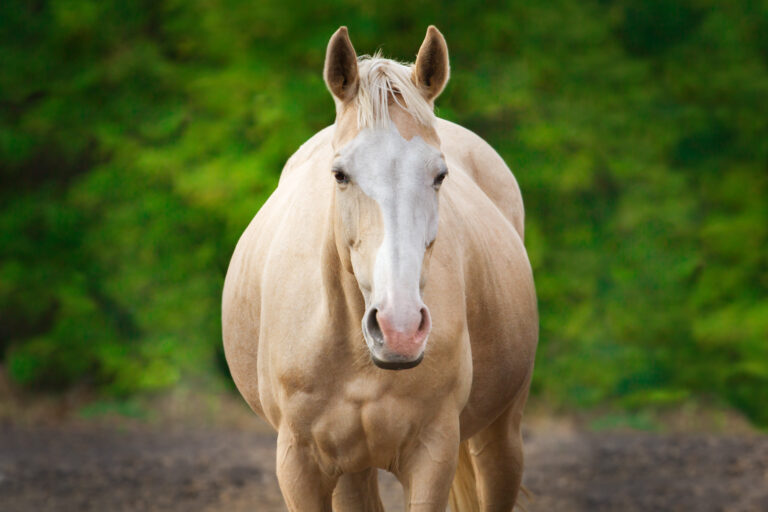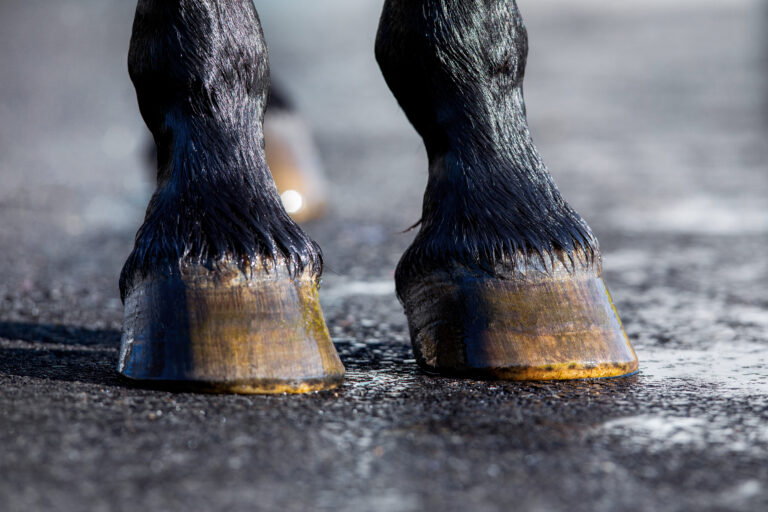
During the Kester News Hour at the 2024 American Association of Equine Practitioners Convention, Maria Schnobrich, VMD, DACT, of Rood & Riddle Equine Hospital, in Lexington, Kentucky, presented papers discussing obesity’s effects on pregnant mares.
Effects of Maternal Obesity on the Pregnant Mare and Her Foal
She first described a 2018 study evaluating the effects of maternal obesity on both the pregnant mare and her offspring. The researchers found that foals born to mares with impaired glucose metabolism also had impaired glucose metabolism at birth. They monitored these foals for 18 months; by 12 months, 53% of foals born to obese mares developed osteochondrosis (OCD) lesions.
Schnobrich said this paper demonstrates that obesity in mares during gestation is associated with:
- Increased insulin resistance in mares during gestation.
- Increased systemic inflammation in both mares and foals.
- Impaired glucose metabolism in both mares and foals.
- Increased osteochondrosis lesions in foals.
Obesity’s Impact on Colostrum and Milk
Schnobrich presented a follow-up study involving 24 mares split into two groups based on body condition score (BCS): 10 mares with BCS < 4 and 14 mares with BCS > 4.25. The research team noted no differences between the placentas in either group but did find differences between the mares’ milk:
- Obese mare’s colostrum had lower medium-chain fatty acids, which affects the foal’s immediate energy, immunity, and gut microbiota development.
- Obese mare’s colostrum and milk had an increased pro-inflammatory profile.
- Obese mare’s milk was associated with foals having a reduced ability to tolerate heat stress because of differences in fatty acid composition.
Foals born to obese mares also had reduced omega-3 to omega-6 fatty acid ratios at birth. And, at 30 and 90 days, they had a pro-inflammatory plasma profile compared to normal foals.
Final Thoughts
In summary, said Schnobrich, this paper shows that maternal obesity can affect milk quality and fatty acid composition, which subsequently affects a foal’s plasma fatty-acid composition and development. The take-home message is that obesity during gestation and lactation can negatively impact the resulting foals.
References
Robles M, Nouveau E, Gautier C, Mendoza L, Dubois C, Dahirel M, Lagofun B, Aubrière MC, Lejeune JP, Caudron I, Guenon I, Viguié C, Wimel L, Bouraima-Lelong H, Serteyn D, Couturier-Tarrade A, Chavatte-Palmer P. Maternal obesity increases insulin resistance, low-grade inflammation and osteochondrosis lesions in foals and yearlings until 18 months of age. PLoS One. 2018 Jan 26;13(1):e0190309. doi: 10.1371/journal.pone.0190309.
Robles M, Rousseau-Ralliard D, Dubois C, Josse T, Nouveau É, Dahirel M, Wimel L, Couturier-Tarrade A, Chavatte-Palmer P. Obesity during Pregnancy in the Horse: Effect on Term Placental Structure and Gene Expression, as Well as Colostrum and Milk Fatty Acid Concentration. Vet Sci. 2023 Dec 4;10(12):691. doi: 10.3390/vetsci10120691.
Related Reading
- Managing Pregnant Mares From Conception to Parturition
- Factors Affecting Pregnancy Rates in Mares Bred With Frozen Semen
- Mitigation Strategies for Fescue Toxicosis in Broodmares
Stay in the know! Sign up for EquiManagement’s FREE weekly newsletters to get the latest equine research, disease alerts, and vet practice updates delivered straight to your inbox.

![[Aggregator] Downloaded image for imported item #18375](https://s3.amazonaws.com/wp-s3-equimanagement.com/wp-content/uploads/2025/09/30140031/EDCC-Unbranded-26-scaled-1-768x512.jpeg)


